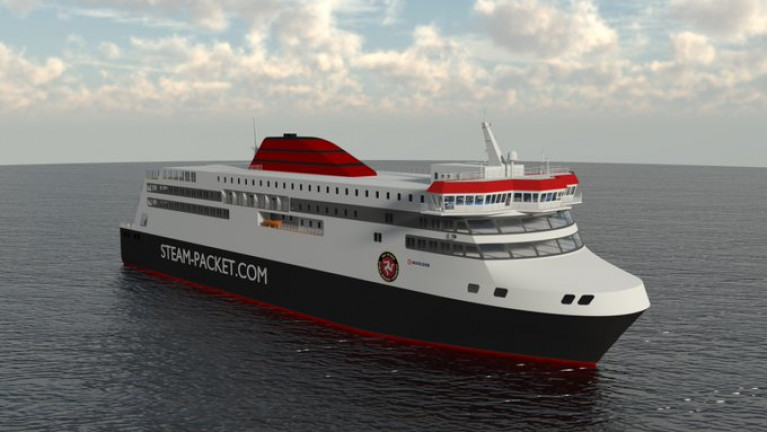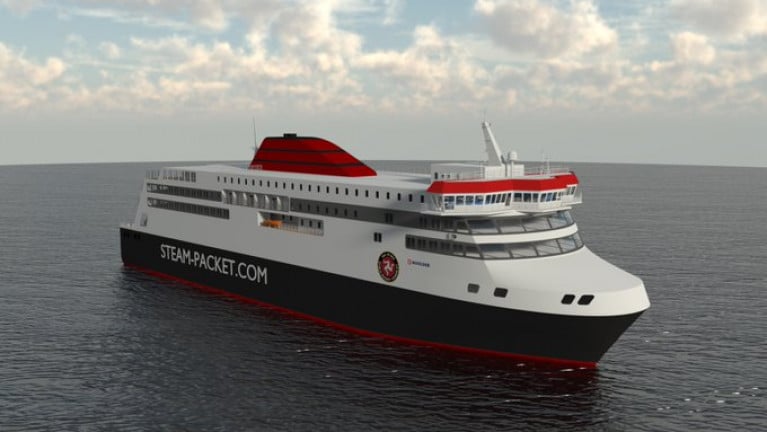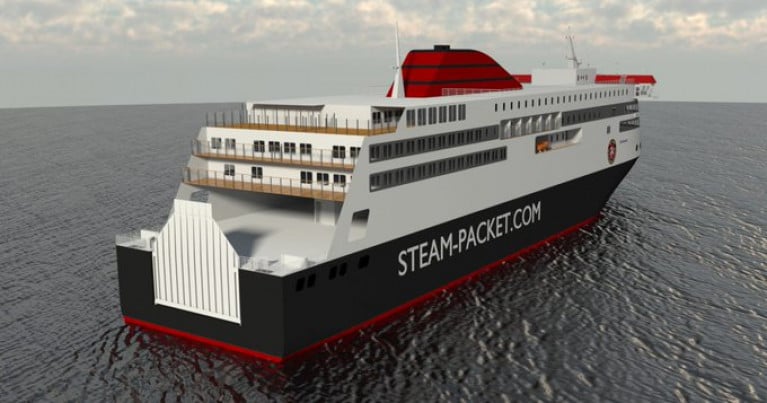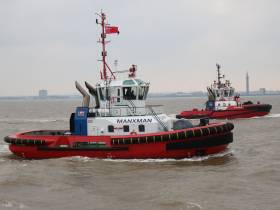Displaying items by tag: Manxman
New Irish Sea Ropax Manxman to Get Original Art Work
Artists on the Isle of Man and island-based creatives are being given the chance to feature their art work in the interior of the newest ferry addition to the operator's Douglas based packet fleet.
The Isle of Man Steam Packet Company, in collaboration with SMC Art Consultancy, has announced it will be commissioning a collection of specially curated artwork to go on permanent display on board the new vessel, the Manxman.
Local artists have been invited to submit paintings and original artwork to the Steam Packet before Wednesday, January 26 to be considered for inclusion into the collection of work, which will ultimately be displayed in three different areas of the new ship, the pet lounge, the forward lounge and the first class lounge.
There is a brief available for each area, and artists may submit a proposal which covers all of the collection within an area, or they may submit a proposal which covers just part of the collection.
Manx Today has further details on the project's brief.
Construction of New Isle of Man Ferry is On Schedule
Work on the new Isle of Man Steam Packet Company's flagship ferry, Manxman, is on schedule.
As previously reported on Afloat, the vessel is under construction in a South Korean shipyard and is due to be ready by 2023.
Managing Director Brian Thomson says images of the ferry in its current state will soon be made available.
ManxRadio also has a podcast with the M.D. discussing further details on the newbuild which is to replace Ben-My-Chree on the Douglas-Heysham route.
Plans for Isle of Man Newbuild 'Manxman' Design Progressing Well Says Steam-Packet
As Afloat previously reported plans for a newbuild ferry to be named Manxman and due for delivery in 2023 replacing Ben-my-Chree, are progressing well according to the Isle of Man Steam Packet.
The detailed design of both the external and internal features of Manxman are currently being undertaken by a team of experts. This vital phase is the longest and where some of the most important decisions are made.
A range of work will take place over a period of around 12 months, including the development of a 3D detailed design drawing of the vessel, as well as construction drawings to allow the vessel to be built. In addition, interior design and internal layouts will be finalised and vessel equipment and machinery agreed.
Despite the ongoing impact of the pandemic, significant progress has been made over the last 12 months. In July, it was announced that the vessel will be built at Hyundai Mipo Dockyard (HMD) in South Korea, one of the world’s major shipbuilders and a leading blue chip name in the industry.
In December, after much deliberation and taking the views of the public into consideration, it was revealed that the new vessel will be named Manxman. More than 7,500 people submitted their favourite from the shortlist of names, the results of which played a key part in the selection process.
Isle of Man Steam Packet Company Chief Executive Mark Woodward said: ‘We are pleased with how plans are progressing and that, despite the pandemic, we have largely been able to stay on schedule and continue to make significant progress. It is a large-scale project which naturally takes time and many hours of meticulous planning, however we are excited to move forward with the detailed design of Manxman.’
There are many stages involved in the process which the Steam Packet Company covers in detail in its two-part blog series, Designing & Constructing a Vessel.
Part one looks at what is involved in the planning, design and construction of a bespoke ferry and the different steps involved in the process.
As for Part two, this provides a unique insight into how long the whole process usually takes, the types of specialist organisations it will be working with and the challenges the ferry company faces over the next few years.
Manxman is the name chosen for the new Isle of Man Steam Packet Company ferry following an online public consultation.
The announcement follows months of deliberation by the Manx ferry company, which in October announced a shortlist of four potential names – Manxman, Mona’s Isle, Manx Maid and King Orry - all of which are traditional Steam Packet Company vessel names.
Throughout November, the public had the opportunity to voice their preference for the name of the new purpose-built ferry as Afloat reported is to be built in Asia. The newbuild due in 2023 is to be flagged and registered under the Isle of Man Register and will replace the Ben-My-Chree.
More than 7,500 people took the opportunity to suggest their favourite of the shortlisted names. Out of these, it was Manxman and King Orry that emerged as the most popular choices by a considerable margin. These two favourites were then considered further by the company and the name Manxman was chosen. This will mark the third ship in the Company’s history to bear the name, the last a turbine steamer launched in 1955.
Isle of Man Steam Packet Company Chief Executive Mark Woodward said: ‘After much thought and deliberation, we are excited to announce the name of our bespoke, custom-built vessel. King Orry and Manxman were both clear favourites, however, with more than 65 years having passed since the launch of our last ship called Manxman - compared to just 20 years since we named a vessel King Orry, we feel that now is the right time for the return of Manxman. It is a name that embodies the Manx spirit, signifies national pride and is suitably enduring for a vessel that will take the Steam Packet Company into its 200th year and beyond. She will be a fine addition to our fleet.
‘We would like to thank everyone who took the time to express their views on the four shortlisted names. It was pleasing to see such interest and, of course, to take the public’s views into consideration when making the final decision - something we thought very important.’
#ports&shipping - A towage firm in the UK which includes operations in Belfast, has expanded its fleet with a new tug making a recent arrival onto the Humber estuary that leads to the North Sea, writes Jehan Ashmore.
The new tug Manxman operated by SMS Towage of Hessle, north Yorkshire, now brings the Humber based fleet up to 10 vessels and this represents around £5 million worth of investment.
According to SMS, the Azimuth Stern Drive (ASD) 2411 tug is capable of 4200 BKW and sports a bollard pull of 72 tonnes. A brake horsepower of 5,600 is achieved and the tug offers more power than seven Ferraris.
The arrival of the Damen built tug in the Netherlands has been welcomed by the Associated British Port group. Among its portfolio, ABP operates the ports of Goole, Grimsby, Hull and Immingham. These ports are located on both sides of the estuary which is formed by the confluence of the tidal rivers Ouse and Trent.
As reported last year, Afloat saw the former Belfast based Irishman operate out of the Port of Hull. On that occasion the 40 tonnes bollard pull tug was assisting cruiseship Marco Polo through a dock lock prior to setting a course bound for Harwich in Essex.
In addition to operations at the North Sea port and in Northern Ireland, SMS also have tugs located in south-east Wales and in Portsmouth, England.

































































